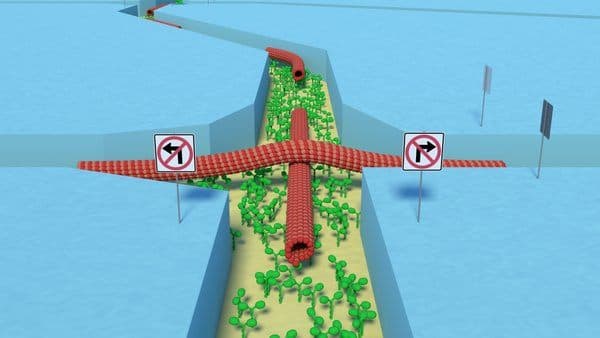Biological Supercomputers Could Soon Become A Reality
As per the latest discovery, the universal energy cycle might get another entity in their structure, which however is not a living being. A group of scientists from the McGill University has developed an efficient way to use the human power source- Adenosine triphosphate (ATP) to power supercomputers. Their discovery is an alternative but efficient approach to solve combinatorial problems briskly using biology inspired parallel computing method.
According to the team leader Prof. Nicolau, the Chair of the Department of Bioengineering at McGill, although contemporary mega-sized supercomputer are voracious input-output processors in terms of number of operations and speed, they fail to provide quick solutions of combinatorial simulations. The new product is small, much faster in processing and uses proteins to function.
Dan Nicolau, Sr. and his son along with other colleagues have been working on the biological super computer for more than a decade. With time and the advancement of technology, they have finally come up with a computer which is based upon a complex nanostructured molecular-motor-driven protein network.

Animated structure of bioinspired network
The prototype displays a road-map analogue to narrow the frame where channels have been embedded. Instead of experiencing electron flow, the unconventional protein strings move inside, which are directly powered by ATP. As a result, the system heats up much lesser than the conventional super computer.
Nicolau explained that predicting the exact time frame for a full scale commercial bio computer is not possible at this moment, but in future they would integrate the system with hybrid computers for performing more advanced mathematical operations. The research was published in the proceedings of the National Academy of Sciences (PNAS) journal and is supported by the European Union Seventh Framework Programme, Defense Advanced Research Projects Agency, NanoLund, The Miller Foundation, The Swedish Research Council, The Carl Trygger Foundation, the German Research Foundation and by the Linnaeus University.
Source: #-Link-Snipped-# | #-Link-Snipped-#
According to the team leader Prof. Nicolau, the Chair of the Department of Bioengineering at McGill, although contemporary mega-sized supercomputer are voracious input-output processors in terms of number of operations and speed, they fail to provide quick solutions of combinatorial simulations. The new product is small, much faster in processing and uses proteins to function.
Dan Nicolau, Sr. and his son along with other colleagues have been working on the biological super computer for more than a decade. With time and the advancement of technology, they have finally come up with a computer which is based upon a complex nanostructured molecular-motor-driven protein network.

Animated structure of bioinspired network
Nicolau explained that predicting the exact time frame for a full scale commercial bio computer is not possible at this moment, but in future they would integrate the system with hybrid computers for performing more advanced mathematical operations. The research was published in the proceedings of the National Academy of Sciences (PNAS) journal and is supported by the European Union Seventh Framework Programme, Defense Advanced Research Projects Agency, NanoLund, The Miller Foundation, The Swedish Research Council, The Carl Trygger Foundation, the German Research Foundation and by the Linnaeus University.
Source: #-Link-Snipped-# | #-Link-Snipped-#
0
